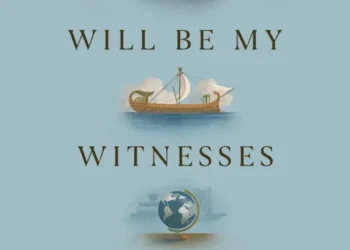The American Spectator has always been both a political and cultural magazine. Throughout its nearly 60-year history, the publication has provided extensive coverage of the film industry, both from a pop culture perspective and from a purely entertainment lens. If one peruses the archival issues of The American Spectator, there is a treasure trove of initial film reviews along with editorial celebrations of film anniversaries. These reviews run the gamut from satire to social commentary to broader explorations of the Seventh Art. The American Spectator’s examination of film as both a fine art and a societal mirror continues to the present day, most notably via contributing writers such as Lou Aguilar, who frequently muses about the disappearance of the Hollywood glamour of yesteryear, or Bruce Bawer, who writes broad sweeping reflections about the evolution of film and television as a storytelling vehicle.
Yes, The American Spectator has had a long, complicated relationship with Hollywood, making it a natural topic for my third interview with Robert Orlando, the director of the upcoming documentary, Surviving the Kultursmog: R. Emmett Tyrrell Jr. and the Rise of The American Spectator.
Cravotta: The American Spectator has never been solely a political publication. The coverage of Hollywood from both a cultural and social commentary perspective has been intrinsic to the history of the publication. How does Surviving the Kultursmog convey the interdependent relationship between The American Spectator and Hollywood?
Orlando: I show that The American Spectator always treats Hollywood as both an amplifier of culture and a mirror of politics. Tyrrell and his writers recognized early on that the battle of ideas often plays out on a soundstage as much as in the halls of Congress. In the film, I highlight the magazine’s witty coverage of Hollywood — sometimes critical, sometimes celebratory — as a way of showing readers that politics alone never defines the magazine. The cultural fight is just as central, and Hollywood is ground zero for that fight.
Cravotta: The economist Ben Stein, who has been a contributing writer for The American Spectator for decades, became a household name after he played a small but extremely memorable part in the 1986 coming-of-age comedy Ferris Bueller’s Day Off starring Matthew Broderick. Ben is in many ways emblematic of how The American Spectator intersects politics and entertainment. How does the film showcase Ben in this context?
Orlando: Ben embodies The American Spectator spirit. He is a sharp, ironic voice in economics and politics, and at the same time, he becomes a pop culture figure through Ferris Bueller. That duality — serious thinker and cultural icon — is exactly what The American Spectator cultivates. In the film, I play with that contrast. I let Ben be reflective and serious about his long career as an American Spectator writer, while also inviting the audience to enjoy the fun of revisiting his Hollywood moment. That blend captures the magazine’s ethos: smart ideas carried with wit and style.
Cravotta: How would you characterize Ben Stein’s relationship with The American Spectator’s founder, R. Emmett Tyrrell Jr. (Bob), Executive Editor Wlady Pleszczynski, and other prominent people associated with The American Spectator across its 60-year history?
Orlando: It is collegial but also deeply personal. Bob and Wlady aren’t just editors; they are part of a creative community where politics, journalism, and humor overlap. Ben fits right into that circle. He can spar intellectually, but he can also trade satire and anecdotes with the best of them. Over 60 years, those friendships have given The American Spectator a kind of cultural capital that extends beyond politics. Ben’s presence at the magazine makes it clear that this isn’t just a policy journal — it is a salon for some of the most interesting minds of the era.
Cravotta: You made a creative choice to interview Ben Stein in Beverly Hills. What role does Los Angeles’s glamorous neighbor have in the history of a publication which began in Bloomington, Indiana, but operated and thrived in the Washington D.C. area for the lion’s share of its history? How does the Beverly Hills location enhance the telling of Bob Tyrrell and The American Spectator’s story?
Orlando: Choosing Beverly Hills is partly logistical, but also symbolic. Here’s a magazine born in Bloomington, raised in D.C., but whose influence stretches into the cultural capital of Los Angeles. To shoot Ben Stein in Beverly Hills underscores that reach. The backdrop reminds viewers that The American Spectator isn’t provincial; it has the cultural confidence to engage with Hollywood, even when Hollywood moves in the opposite ideological direction. The location expands the geography of the story, showing that Bob Tyrrell’s magazine is never bound by place — it is part of a national conversation.
Cravotta: Your interview with Ben Stein pays homage to his famous Ferris Bueller role. And that was obviously chosen because the film Ferris Bueller struck a chord with a segment of The American Spectator’s audience, namely the younger Babyboomers and Gen X. Just as many young Boomers and Gen Xers associate Ferris Bueller with their college or high school careers during the 1980s, they also have memories from that time of going to their mailbox to read their copy (or their parents’ copy) of The American Spectator. How is this nostalgia for the 1980s portrayed in Kultursmog?
Orlando: I lean into it. For many readers, the ’80s are the golden years of The American Spectator — its circulation launching, its satire biting, and its writers shaping the conservative movement. At the same time, Ferris Bueller and films like it define an era of youthful rebellion. By paying homage to Ben Stein’s famous scene, I tap into that collective memory. The nostalgia isn’t just about movies or magazines — it’s about remembering a cultural moment when conservatism and pop culture collided in surprising ways.
Cravotta: Hollywood, which used to be the bastion of conservatism many decades ago, is now synonymous with liberalism to the point where conservatives have to hide or downplay their political beliefs to stay employed in the industry. How is this situation reflected in the interviews you conducted with Ben Stein?
Orlando: Ben is candid about the climate in Hollywood. He remembers when conservatives could speak more freely, and he laments how ideological conformity hardened over time. His reflections bring authenticity to the film because he lives it. Hollywood isn’t just a setting for him — it is his career home. Through his testimony, I capture the sense of loss, but also the resilience of those who refuse to compromise their beliefs just to “fit in.” That is very much in line with The American Spectator’s contrarian tradition.
Cravotta: Some conservatives are starting to make inroads in Hollywood in terms of finding financing to bring to the screen stories that reinforce traditional values and disparage woke-ism. How is this slow but continuing journey conveyed in Surviving the Kultursmog?
Orlando: The film doesn’t suggest a revolution, but it does point to the beginnings of a counternarrative. Independent financing, niche streaming, and grassroots networks are giving conservatives ways to bypass traditional Hollywood gatekeepers. By framing Ben Stein’s career against this backdrop, I show that the long game is about building parallel platforms — something The American Spectator models in print journalism decades earlier.
Cravotta: Bob Tyrrell and The American Spectator have connected with prominent people in entertainment either directly through a personal contact or indirectly via the pages of The American Spectator. How does Surviving the Kultursmog bring these experiences to life?
Orlando: I bring it to life through story and character. Whether it’s Ben Stein’s Hollywood crossover, or Bob Tyrrell’s friendships or contact with the likes of Madonna, that link politics to culture, I try to make those intersections feel alive on screen. The American Spectator isn’t an ivory tower publication; it is a cultural player. The film uses archival clips, personal anecdotes, and satirical flourishes to let viewers feel that interplay. In the end, I am not just telling the history of a magazine — I am showing how it touches and is also touched by the world of entertainment.
Cravotta: Thank you, Rob, for sharing your reflections about The American Spectator’s relationship with Hollywood and your approach toward showcasing it in Surviving the Kultursmog: R. Emmett Tyrrell Jr. and the Rise of The American Spectator. I look forward to our next conversation.
For more information about Kultursmog, visit https://www.kultursmogfilm.com/.





![Gavin Newsom Threatens to 'Punch These Sons of B*thces in the Mouth' [WATCH]](https://www.right2024.com/wp-content/uploads/2025/08/Gavin-Newsom-Threatens-to-Punch-These-Sons-of-Bthces-in-350x250.jpg)
![ICE Arrests Illegal Alien Influencer During Her Livestream in Los Angeles: ‘You Bet We Did’ [WATCH]](https://www.right2024.com/wp-content/uploads/2025/08/ICE-Arrests-Illegal-Alien-Influencer-During-Her-Livestream-in-Los-350x250.jpg)








